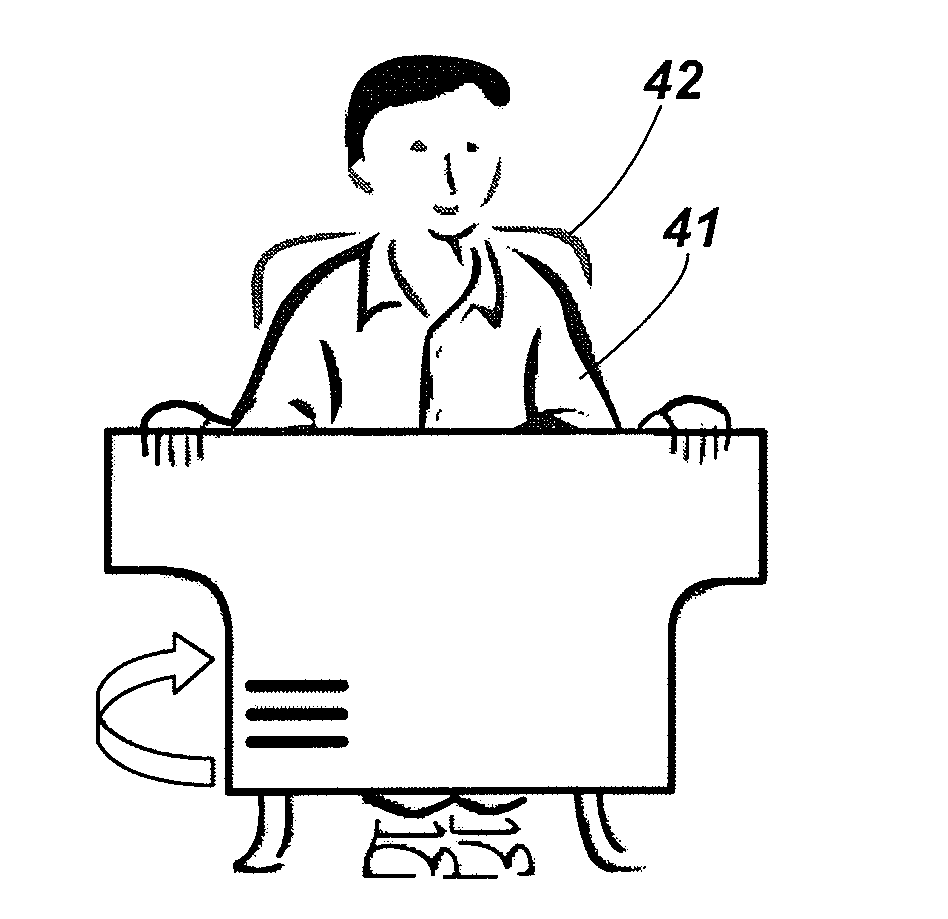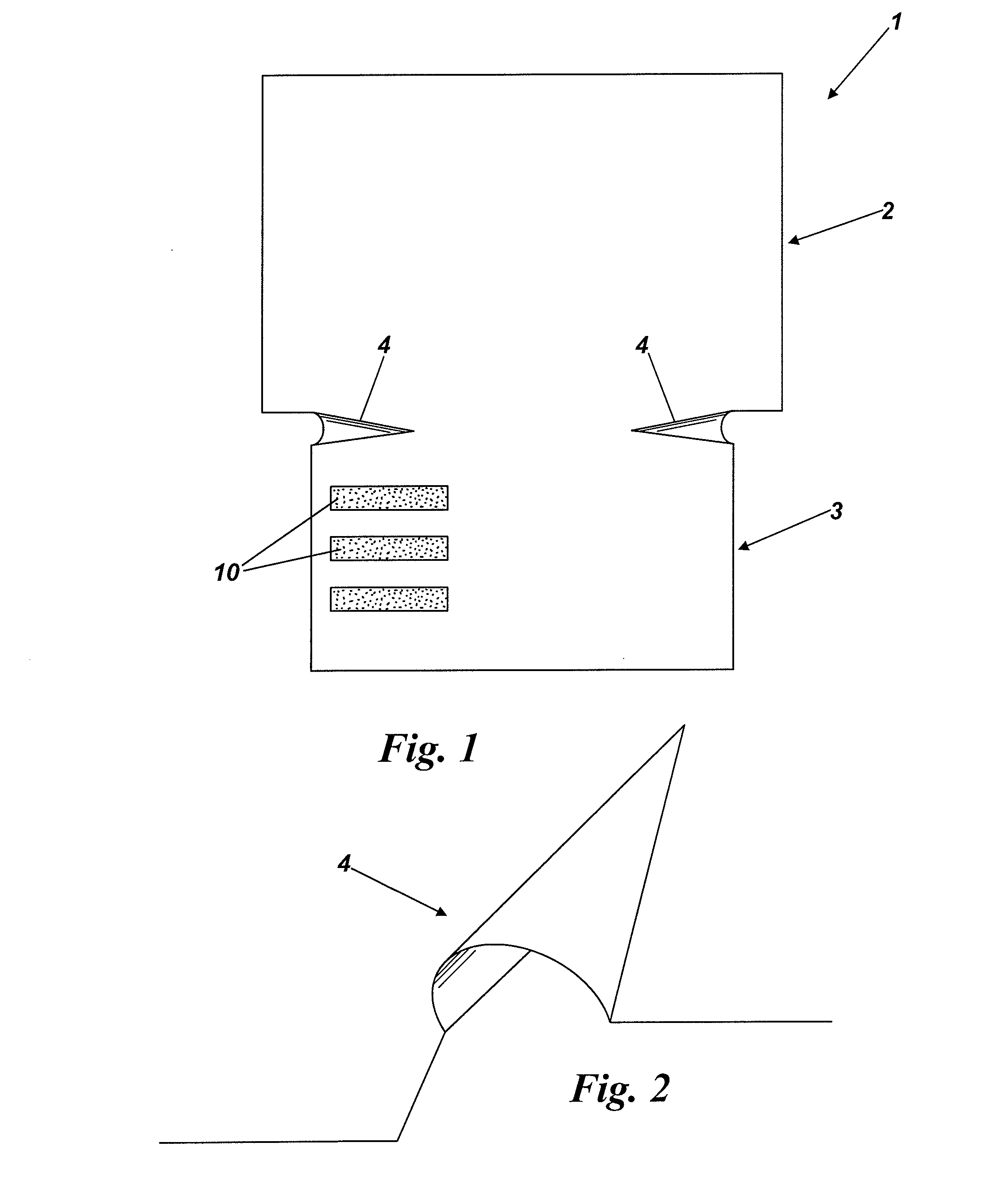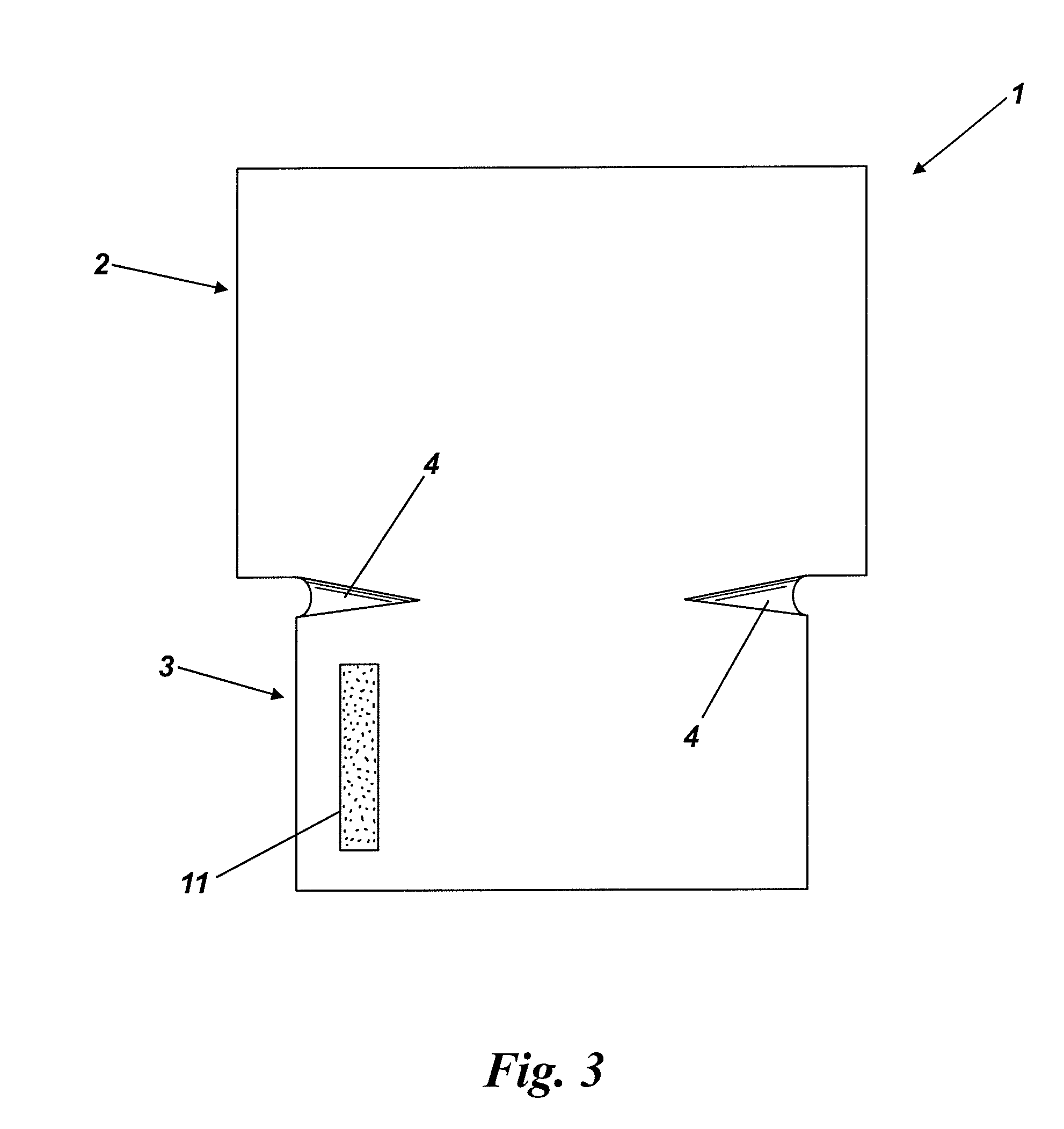Garment
a technology for improving garments and garments, applied in the field of improved garments, can solve the problems of retaining heat, affecting the comfort of users, affecting the comfort of users,
- Summary
- Abstract
- Description
- Claims
- Application Information
AI Technical Summary
Benefits of technology
Problems solved by technology
Method used
Image
Examples
Embodiment Construction
[0025]There will now be described, by way of example only, the best mode contemplated by the inventor for carrying out the present invention. In the following description, numerous specific details are set out in order to provide a complete understanding to the present invention. It will be apparent to those skilled in the art, that the present invention may be put into practice with variations of the specific.
[0026]FIG. 1 shows a font view of a garment 1 comprising a first section 2 of general rectangular configuration which is joined to a smaller generally rectangular portion 3: gussets 4 are provided at the edges of a line dividing the first and second sections. Conveniently the first and second sections are made from a single piece of material (which may comprise several layers: for example, a breathable waterproof membrane may lie on the outside a pocketed thicker material on the inside with a soft combed material on an inside face; alternatively the material may comprise but a...
PUM
 Login to View More
Login to View More Abstract
Description
Claims
Application Information
 Login to View More
Login to View More - R&D
- Intellectual Property
- Life Sciences
- Materials
- Tech Scout
- Unparalleled Data Quality
- Higher Quality Content
- 60% Fewer Hallucinations
Browse by: Latest US Patents, China's latest patents, Technical Efficacy Thesaurus, Application Domain, Technology Topic, Popular Technical Reports.
© 2025 PatSnap. All rights reserved.Legal|Privacy policy|Modern Slavery Act Transparency Statement|Sitemap|About US| Contact US: help@patsnap.com



